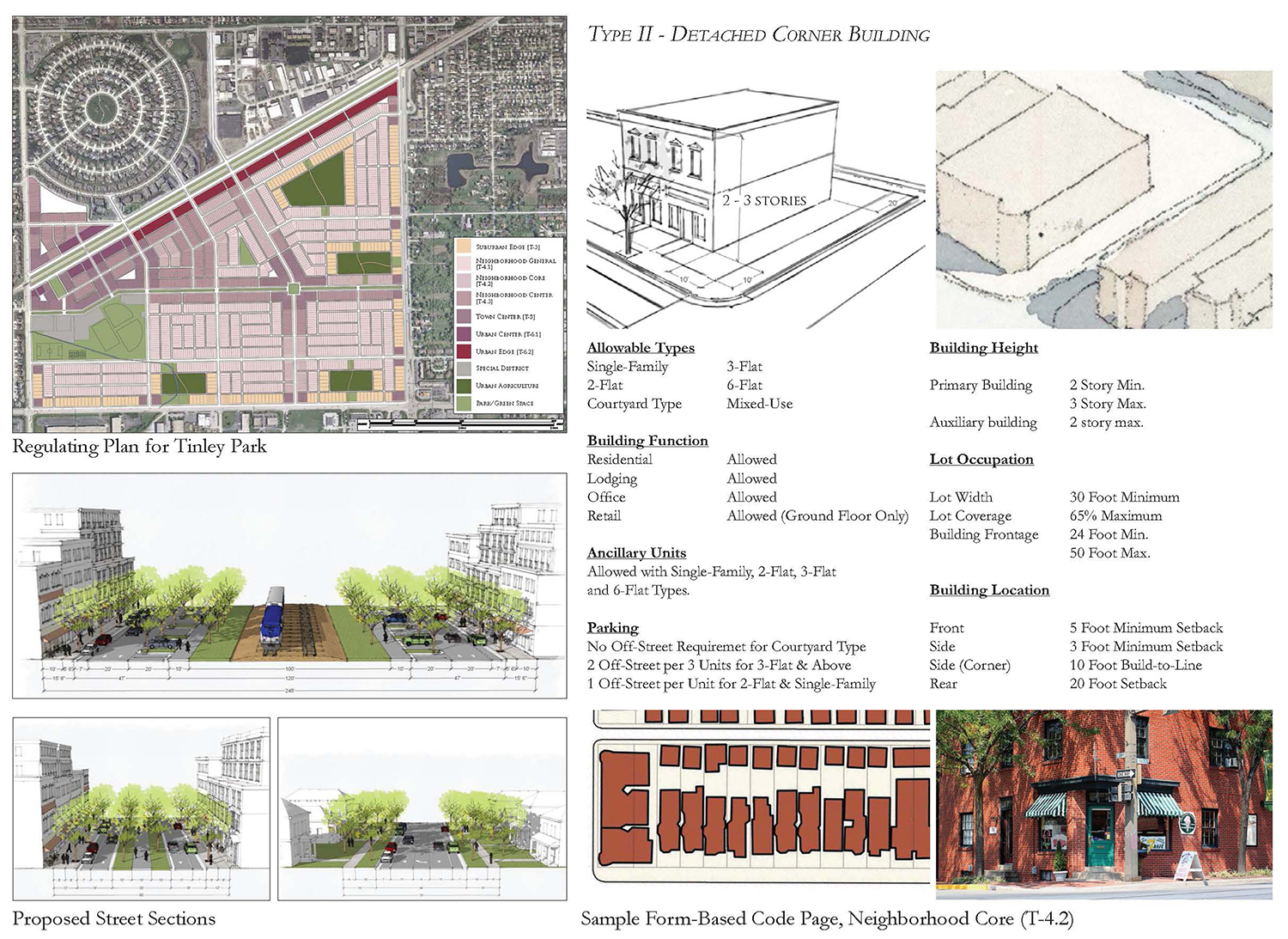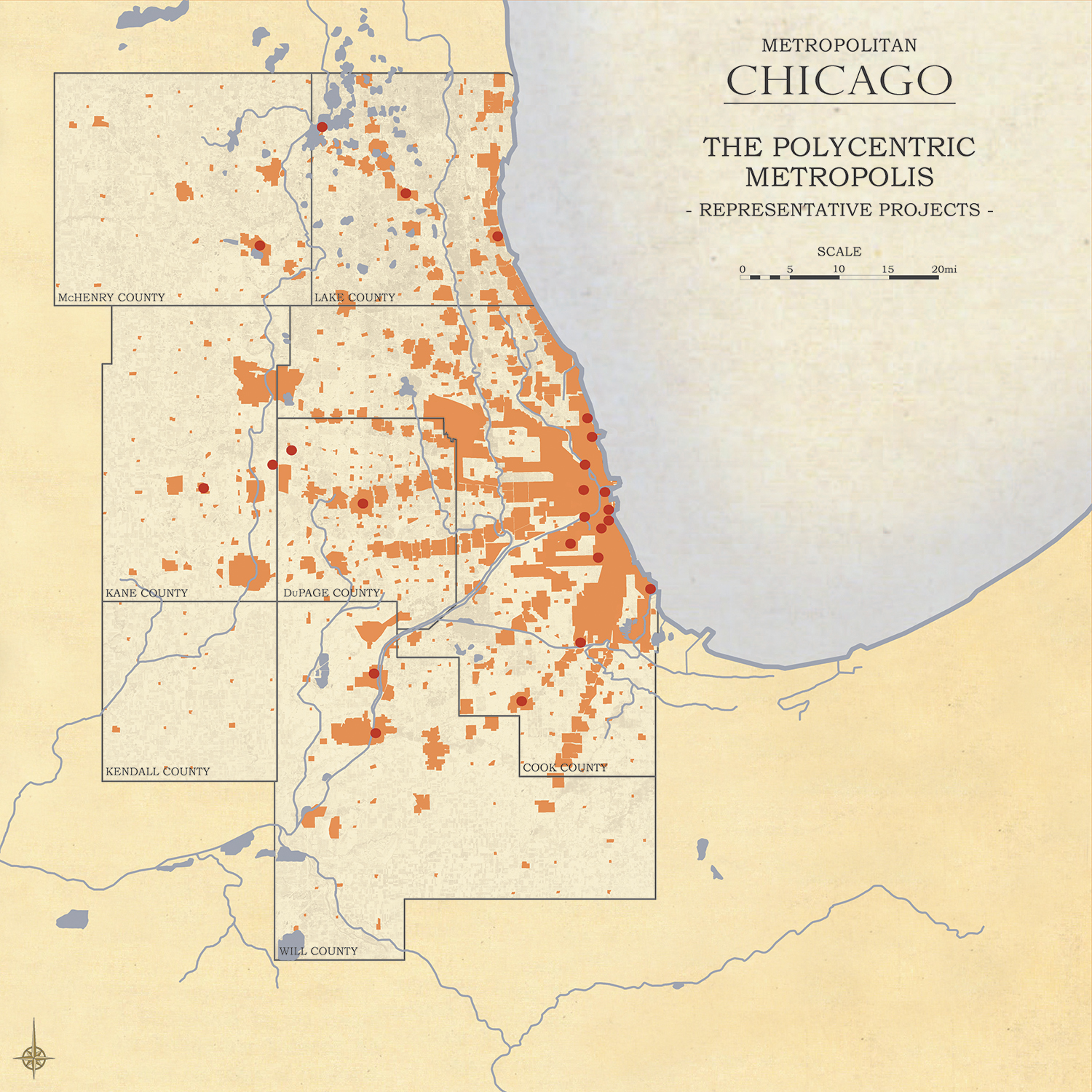Central to The Notre Dame Plan of Chicago 2109 proposal are four identifiable compact mixed-use settlement types ranging from more rural to more urban, defined according to both density and area. These are the more rural settlements of the hamlet and the village, and the more urban settlements of the town and the city (the latter comprised of neighborhoods).

Hamlet / Village / Town / City as rural-to-urban settlement types defined by population density and land area
Each of these settlement types permits and entails a mix of commercial, residential and civic uses, and is composed formally of a variety of known spatial types —most basically Streets (and their hierarchical variants: Boulevards, Avenues, Alleys) and Squares— and building types most simply categorized as background buildings and foreground buildings (the latter typically religious or civic in character). In
Chicago 2109, hamlets and villages are distinguished from each other by density and area, but also from towns and cities by their location and by the presence or absence of public rail transport. In this proposal, rural hamlets and villages generally are settlement types found at the edge or crossing of existing state and / or county roads, and are
surrounded by either a natural or agrarian landscape, with which they presumably have some working relationship; whereas towns and city neighborhoods are larger and denser settlements organized in relationship to (rail) public transit stops, and have a natural or agrarian landscape
at their edge.
In accordance with the goods of social solidarity, individual and communal self-governance, political and civic subsidiarity, and environmental stewardship, Chicago 2109 presumes two scales of political organization below the levels of state and national government: the metropolitan region (in this case the existing seven counties of northeastern Illinois), and the local political community as embodied in hamlets, villages, towns, and city neighborhoods.
Metropolitan government would be responsible for overseeing the regional issues of land use (including natural and agricultural preserves), watershed protection, wastewater treatment, regional waste management, public transportation, regional road infrastructure (excluding federal interstate highways), and base financing of elementary and secondary education.

A sample page of local form-based code by Notre Dame graduate student Andy Rutz, proposed for the Town of Tinley Park
Local political communities would bear responsibility for developing their own design development guidelines (including local zoning and street design codes), providing police and fire protection and street and sanitation services, maintaining public parks, and articulating and enforcing (as required) communal norms within some larger constitutional framework of individual rights.
* * * * * * * *
Over the years, either as part of this Chicago study or as independent exercises, Notre Dame graduate students and faculty have undertaken several projects throughout metropolitan Chicago at the scale of the village, the town and the city neighborhood, which in this context may be considered representative. These projects are indicated on the drawing below; click the names on the map to see the individual projects. (N.b., a dashed circle typically indicates one-half mile diameter.)


